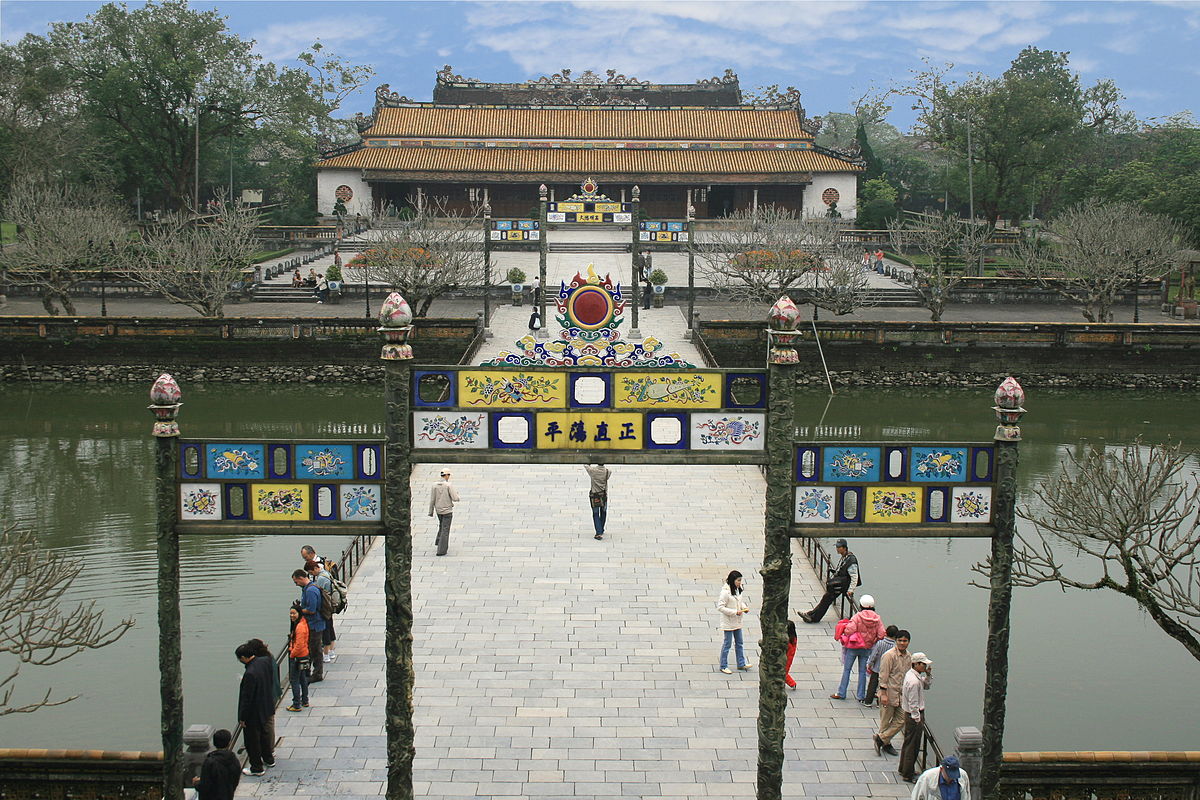 | ||
The Later Trần dynasty (Vietnamese: Nhà Hậu Trần) period of 1407 to 1413 in the history of Vietnam is characterized by two revolts, centered on Trần Ngỗi (陳頠) (Giản Định Đế (簡定帝)) and Trần Quý Khoáng (陳季擴) (Trùng Quang Đế (重光帝)).
Contents
Giản Định Đế (1407–1409)
A younger son of the late emperor Trần Nghệ Tông, Trần Ngỗi rises his banner in 1406, proclaimed himself Gian Dinh emperor and started a revolt. His base first centered in Ninh Bình Province and was supported by Tran Trieu Co, a mandarin under the late Trần dynasty.
Lacking the materials and poorly managed, he was defeated, abandoned Ninh Bình and fled further south into the province of Thanh Hóa. Here he met Dang Tat who at that same time was waging a revolt also against the administration of the Ming. Dang Tat was a high-ranking official under the Trần dynasty. The ranking and followers of Gian Dinh together with Dang Tat kept swelling and gained more and more support from the Viet people since 1408.
Gathering momentum and popularity, Gian Dinh moved further north with a small army, defeated the Ming in a battle at Bo Co in which Lu Nghi, a Ming general, was fatally wounded.
Gian Dinh, victorious, would like to wage wars further north, right into Thăng Long, the capital. But Dang Tat, his lieutenant, stopped him and advised him not to, judging that his army is still small, ill-organized and does not have enough weaponry, or supply for a long war. Another advocate with him, Nguyễn Cảnh Chân, a former minor general under the Tran, also pleaded not to wage a bigger war with the Ming who at that time still control most of the territories. However, Gian Dinh, not taking any advice, is riding on his pride. He soon has his 2 best lieutenants both Nguyễn Cảnh Chân and Dang Tat arrested and killed, causing a dissension in his army and revolt.
Gian Dinh moved along with his plan, revolt and continued waging wars with the Ming until he was captured by the Ming and slain around 1410.
Trần Quý Khoáng (1409–1413)
Meanwhile, the other side who supported Dang Tat and Nguyễn Cảnh Chân, now has 2 new figures: Dang Dung and Nguyen Canh Di, both are sons of Dang Tat and Nguyen Chan respectively. These 2 men search for a new master. They found Trần Quý Khoáng, a nephew of the late emperor Trần Nghệ Tông.
Even within the ranks of the rebellions, there were rifts and disagreements instead of unity. Trần Quý Khoáng on his side waged war against the Ming invaders. On the other side, Gian Dinh De has his.
Knowing the rift and weakness of the revolt, the Ming took the initiative to attack Thanh Hóa and Nghệ An in 1413. That proved disastrous for Trần Quý Khoáng. Both Gian Dinh and Trần Quý Khoáng retreated to the mountains and forests. Their situation is going bleak, not enough supplies. The flame of their resistance faded, and faded. Trần Quý Khoáng was captured together with his whole clan in 1413. He committed suicide.
Along a few years later, a new resistance movement was born under Lê Lợi's banner.
Analysis of the Later Trần failures
As we can see the resistance of the Late Tran against the Chinese Ming failed because of disunity and of the selfishness of the individual. But to organize a real, total uprising one has to have not only wealth and popularity but also management and organization skills as well as military skills. Another important talent is how to recognize, and use, utilize people's skills. For all these factors to happen, one has to wait until Lê Lợi's on scene arrival.
